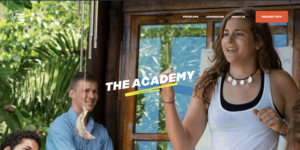Smart Review | The Global Education Guidebook

Earlier this year we talked about the power of global connections amongst schools, districts, regions, states, provinces and national educational systems and we challenged you to join us in creating a #SmartPlanet by becoming a globally connected educator. Many have accepted this challenge, but some may be left wondering: “how do I get started?” Fortunately, Jennifer D. Klein, head of a PK-12 school in Bogatá, Colombia, and CEO of PRINCIPLED Learning Strategies, has recently published a guidebook that answers this very question.

Educators who are striving to be globally connected can look to The Global Education Guidebook for strategies to develop equitable global partnerships that mutually benefit students of all ages. The key word here is “equitable,” and I appreciate that Jennifer is so insistent in stressing that global partnerships must be equitable, meaning partnerships should be based on “trust, mutual respect, and a shared vision of global collaboration and development.” It was refreshing to read an introduction that warns “global citizenship is often translated in simplistic terms, becoming an endless fund-raising campaign in which students in the West do what’s referred to saving the rest. This kind of global education does not foster true citizenship; instead, such experiences can dehumanize the people students seek to understand, turning them into empty vessels who can only survive with the outsiders’ solutions, not whole people with multifaceted lives and their own ideas about how to improve their communities.” This guidance is thoughtfully woven throughout the book, and the reader is reminded to continually check their implicit biases and mindsets to ensure that the partnerships they are developing are mutually beneficial and equitable.
The book is segmented into ten chapters, which can really be thought of as action steps for educators interested in being more connected:
- Chapter One: Building Competencies via Global Partnerships
- Chapter Two: Preparing for Global Collaboration
- Chapter Three: Getting a Feel for What’s Possible
- Chapter Four: Finding Existing Partnership Programs That Work
- Chapter Five: Finding a Global Partner on Your Own
- Chapter Six: Choosing Strategies for Successful Communication
- Chapter Seven: Avoiding Equity Pitfalls
- Chapter Eight: Exploring Social Justice Challenges Through Partnerships
- Chapter Nine: Assessing Global Competencies, Partnerships and Programs
- Chapter Ten: Building a Culture of Global Engagement Across the Community
One of the things that makes this book so practical and user-friendly is that within almost every chapter, readers will find a readiness assessment, brainstorming guide or worksheet to assist you as you plan for global collaboration. As an added bonus, all of the worksheets are reproducible and free of charge on the Solution Tree website.
 While I found each step (chapter) of the The Global Education Guidebook to be packed with useful information, I read (and re-read) chapters seven and eight, and I encourage all educators to do the same. In these chapters, Klein reinforces the critical point that global partnerships must be developed through the lens of equity, and she provides terrific guidance on how to ensure that happens.
While I found each step (chapter) of the The Global Education Guidebook to be packed with useful information, I read (and re-read) chapters seven and eight, and I encourage all educators to do the same. In these chapters, Klein reinforces the critical point that global partnerships must be developed through the lens of equity, and she provides terrific guidance on how to ensure that happens.

In chapter seven, educators will find sage advice on six pitfalls to avoid when seeking to form an equitable and mutually beneficial global partnership:
- Avoid exoticizing partners. Partners shouldn’t be viewed as just alluring and different. Jennifer rightly warns that doing so, “no matter how positively, can diminish their humanity and turns the “other” into a showpiece rather than a human”.
- Avoid misperceiving academic capacity. Break down any preconceived notions you may have about what you think it means to be intelligent or educated.
- Avoid focusing solely on helping. The key for not falling into this trap is to focus more on what your partner can offer rather than what they lack.
- Avoid solving for more than with. Always think through the lens of collaboration and mutual benefit. When working to solve a challenge, ensure that you and your partner are both offering solutions.
- Avoid assuming partners can–or should–have the same technologies. Understand the technological availability, and limitations, your partner teacher may have and modify your project as needed.
- Avoid conflicting priorities. Don’t let your curriculum priorities, deadlines, standards, etc. be the only ones that matter and drive the relationship. Be sure you are asking about, and listening to, the priorities your partner teacher has and then integrate them into your project.
Even if you do your best to avoid all of the pitfalls highlighted in chapter seven, it is inevitable that differences of opinion will at some point arise. This is to be expected and therefore should not be avoided–in fact Jennifer stresses that “only by engaging with people who think differently do we grow our own worldviews.” I will be the first to admit that challenges can be hard and sometimes uncomfortable, but the good news is that the guidebook will not leave you wondering what to do in these instances. Look to chapter eight for guidance on how to explore and address controversial challenges in global partnerships.
If you are looking to start a global connection over the course of the school year, I highly recommend reading The Global Education Guidebook. Upon finishing the book, you should feel equipped to help us in creating a #SmartPlanet by joining, or starting, an equitable global partnership in your classroom.
For more see:
- Infographic | Connecting Educators Globally
- For School Improvement, Network Globally
- The New Equation for Global Competencies = PBL+SEL
Stay in-the-know with all things EdTech and innovations in learning by signing up to receive the weekly Smart Update.






0 Comments
Leave a Comment
Your email address will not be published. All fields are required.